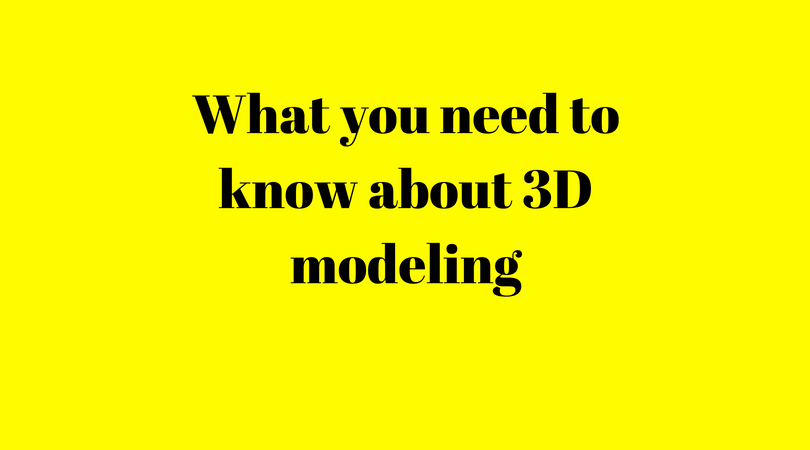What you need to know about 3D Modeling
For 3D models creation, certain sources are required: a drawing, an image, a drawing, a sample or a real object. Or a very clear idea of the future model. Also, to facilitate the process, 3D modeling can occur based on the result of 3D scanning. This approach is used when it is necessary to model complex objects or real people.
There are two types of surface representation in 3D models: polygonal and voxel. The second is used quite rarely, especially in 3D printing, since it does not allow to achieve a uniform surface. The main application of voxel graphics is medical devices (computer tomographs and MRI scanners). Polygonal representation is very popular and is used in almost all programs. This is a universal representation, with the help of which 3D models of any purpose are created. Now almost every modeling application allows you to also manipulate the color, lighting, and texture of the 3D model. After all the settings, rendering is performed, or visualization, thanks to which the appearance of the model can be assessed visually.
You can find this motorcycle and many other motos 3d models here https://www.flatpyramid.com/vehicles-3d-models/motorcycles/
Types of 3D modeling
Enumerate all types of 3d modeling does not make sense. This is purely professional information, which will be needed only by those who wish to learn 3D modeling. We are exclusively for educational purposes highlight the main types of development of 3D models.
These include:
Solid modeling. The most reliable type of creating models for 3D printing. Allows you to reliably display and transmit the required parameters without distortion when translating the model into the control code for the 3D printer; 3D modeling 3d modeling
Polygonal modeling. Basic view of 3D modeling. Based on it, many subspecies are built. Allows you to conduct a variety of manipulations with the object, very functional;
Sculpting. This kind of 3d modeling is more suitable for creating models of people, animals, whole organic in general. Allows to literally “sculpt” on a digital scale, which will greatly please sculptors and artists;
More about 3D modeling
We’ll tell you a little more about 3D modeling below. The information provided will help you better understand the digital design system. So, the main terms:
Tops. Points that contain information about the position in three-dimensional space, color and texture;
Ribs. A section (line, segment) connecting two vertices;
The edges. A set of edges forming a closed space;
Polygons. Set of faces. Can have both equal and different sizes. Most often has the form of triangles or rectangles;
Surfaces. They are formed by a set of polygons and represent the appearance of the model.
They reflect all the changes that the model is subjected to.
Still it is necessary to tell about polygonality of 3D model. The number of polygons carries information about the weight of the object. The more polygons, the more detailed the model. But the appearance of the product is also affected by other factors, such as the smoothing parameter.






